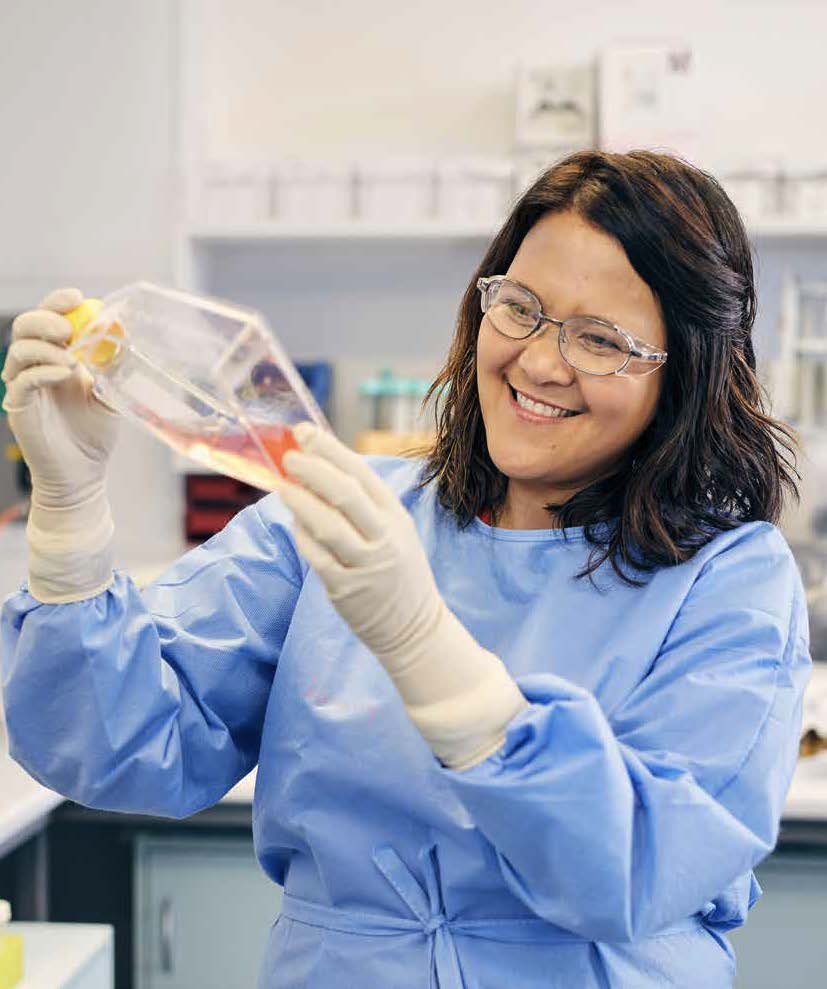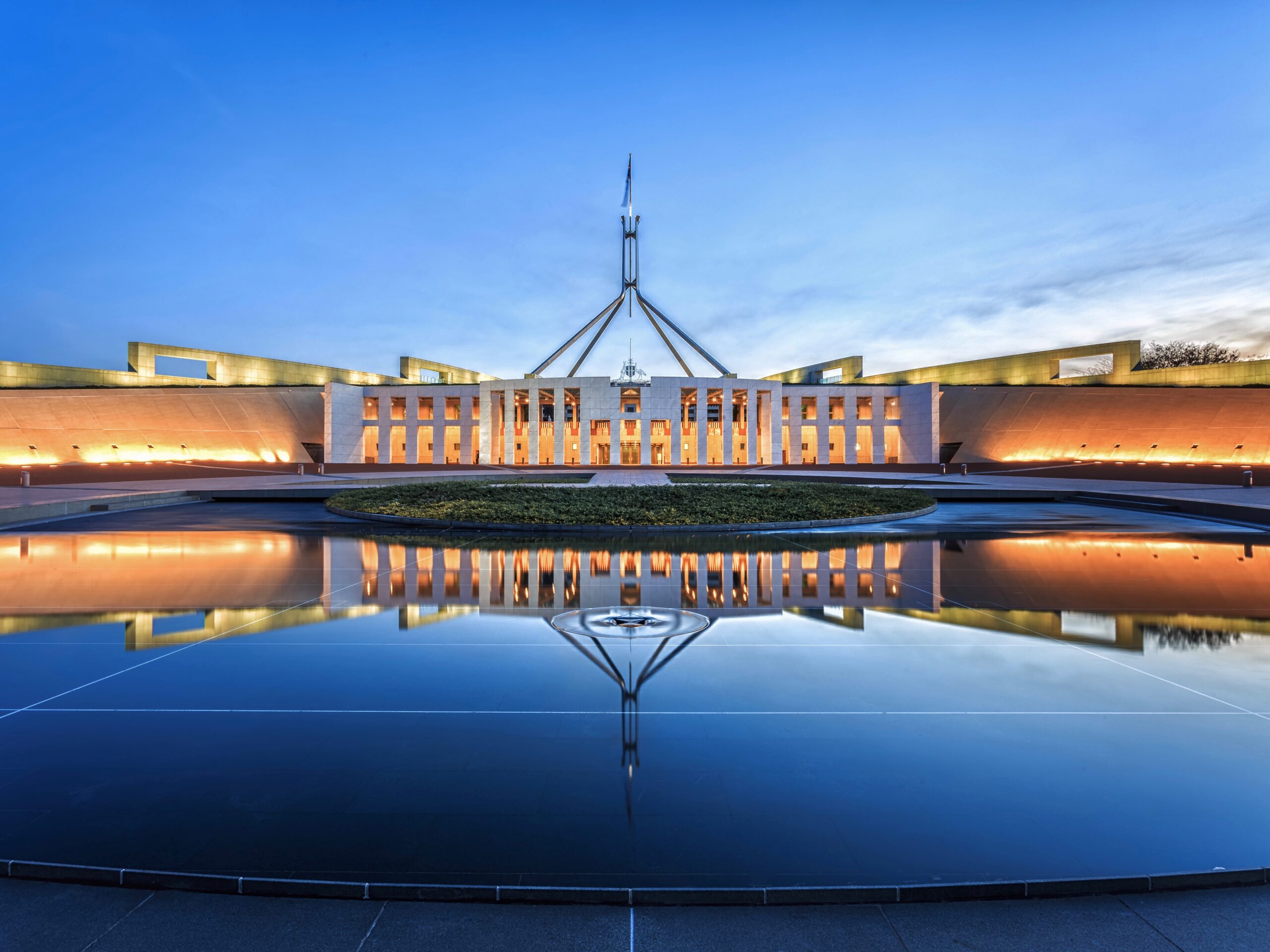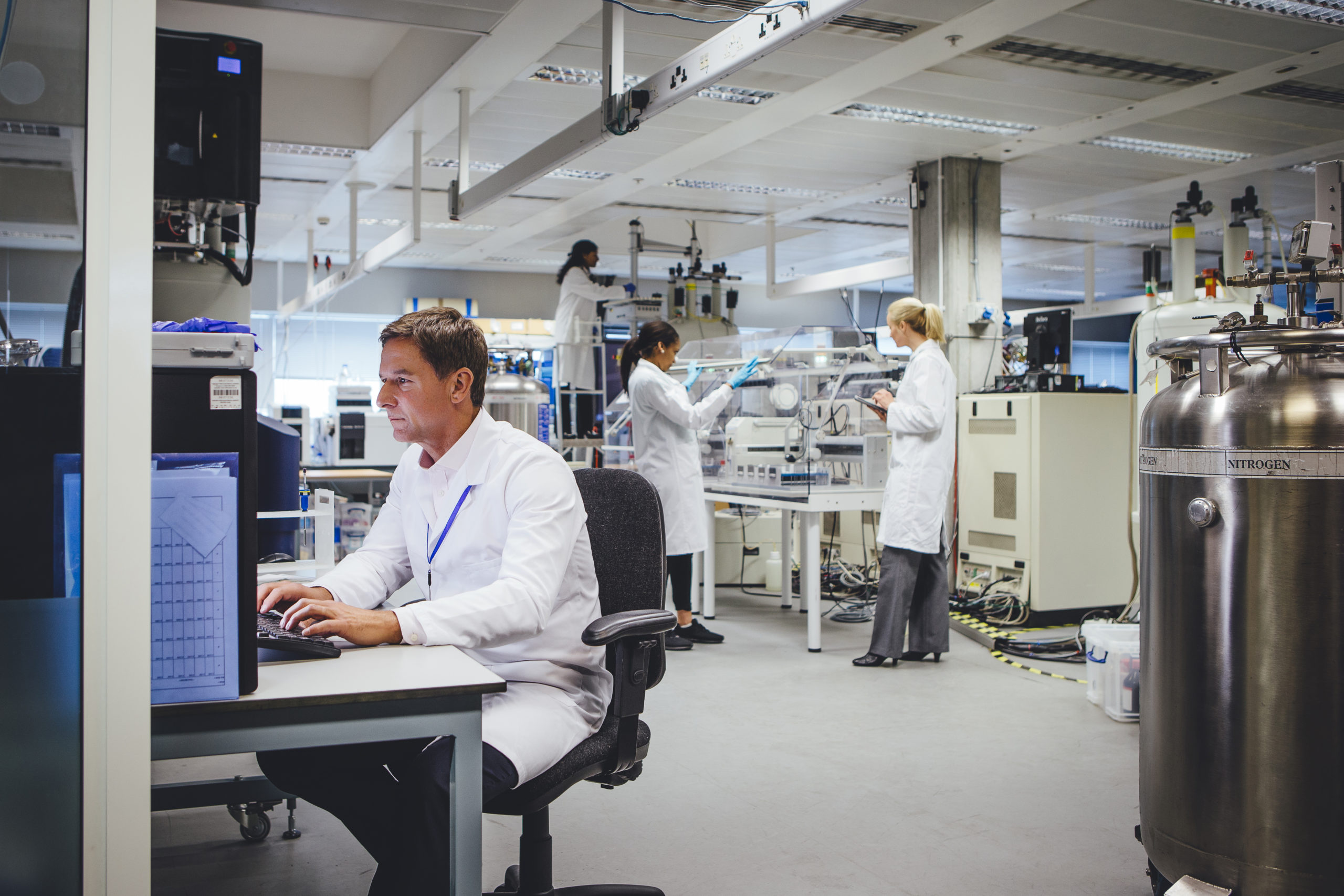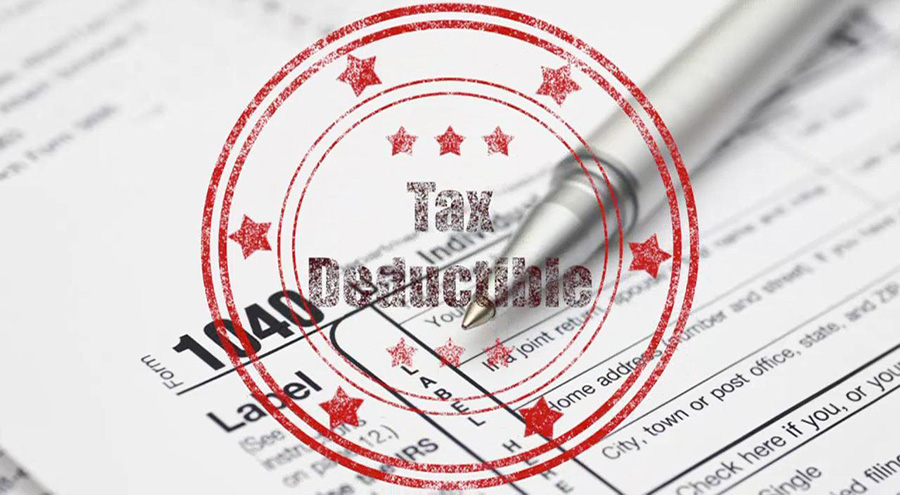Research Australia participated in consultations for the MRFF Australian Medical Research and Innovation Priorities and the MRFF Act Review. We were invited to a round table hosted by AMRAB, and provided a written submission. We recognised many positive enhancements have been suggested in the draft priorities for 2022-24. Our main concern was the lack of cohesion that links all the priorities to drive transformation across the entire health and medical research and innovation ecosystem.
Budget 2023 Update
Summary
Treasurer Jim Chalmers’ mini Budget in October last year implemented some of the new Government’s election promises and cut some former Government’s programs. Tonight, the Government has delivered its first full Budget, setting the agenda and responding to the ongoing pressures of high inflation, a Medicare system in need of reform, a housing crisis and the need to decarbonise and diversify our economy.
The surprise Budget surplus for this year has been delivered, in part, by higher than expected commodity prices. Commodity prices are expected to fall in the future, and the Government has committed to diversifying our economy with more high value advanced manufacturing, including medical products. While some progress is made in this Budget, there is still more that can and must be done.
The rising cost of living has continued to be a key political issue. In the March 2022 Budget, the CPI was forecast to be 3.0% for 2022-23. The Budget tonight expects inflation to have peaked, at around 7% p.a. and to fall to 3.25% over 2023-24. Inflation increases the cost of undertaking health and medical research and innovation. Government funding for research has failed to keep pace with inflation over successive Budgets. This Budget delivers some relief with real increases in funding for ARC programs, while the NHMRC’s MREA is forecast to keep up with inflation.
Please read on for our summary of what this Budget means for health and medical research and innovation.
Health Portfolio
Improved digital health systems
The Budget includes a $951.2 million over 4 years investment in digital health technologies to build a more efficient, connected and collaborative healthcare system. This includes:
-
- $325.7 million, to make the Australian Digital Health Agency an ongoing entity, so that it can continue to deliver important digital health infrastructure, including upgrading My Health Record. Only one in 10 medical specialists currently use My Health Record and only one in five diagnostic imaging reports are uploaded. We continue to await further information on a Framework for secondary use of My Health Record data for research purposes.
- $429 million to ensure that My Health Record is easier to use, is compatible with the information and billing systems that health practitioners are already using, and connects the health system so that patients can access and securely share their health data.
- $126 Million to renew the Intergovernmental Agreement on National Digital Health for 4 years to progress the secure, safe and efficient sharing of information across the health system.
Australia’s first National Clinical Quality Registry Program receives $40 million over 4 years. Nominated areas are dementia, cystic fibrosis, and pelvic floor disorders. This is good news, reversing several years of delays; registries are a vital bridge between healthcare and research.
Australian Centre for Disease Control (ACDC)
The Government is fulfilling its election promise to create the ACDC, backing up the $3.2 million allocated in the October Budget for preparatory work with $91.1 million to establish an ‘interim’ Australian Centre for Disease Control in the Department of Health and Aged Care and replenish the National Medical Stockpile.
Other announcements include
- $260m invested in a new national lung cancer screening program, with at risk Australians able to get a lung scan every two years, as recommended by the independent Medical Services Advisory Committee.
- The Therapeutic Goods Administration (TGA) will receive $61 million over 4 years for a range of activities aimed at protecting public health) including continued assistance to small and medium enterprises particularly those developing emerging technologies.
- $26.3 million over 4 years to support equity in the healthcare system and improve the health of Australian women and girls), including through the Australian Longitudinal Study on Women’s Health and Australian Institute of Health and Welfare National Maternity Data development project.
- $900,000 to develop a 10 Year National Action Plan for the Health and Wellbeing of LGBTIQA+ people, and to establish an LGBTIQA+ Health Advisory Group.
Consistent with Research Australia’s sustained advocacy on this issue, this Budget sees the Government’s funding to the NHMRC’s Medical Research Endowment Account appear to just keep up with projected inflation, but with an unexplained decline in funding in the last year of the forward estimates. The MRFF funding meanwhile is static at $650 million per annum, meaning it fails to keep up with inflation and is declining in real terms.
Medical Research Future Fund
The funding available from the MRFF each year is dependent on the investment return on its capital. For 2023-24 the Future Fund Board of Guardians has determined the amount available for grants of financial assistance is $870 million. [1] Despite this, only $650 million has been made available as funding in 2023-24. And this is despite an underspend in 2022-23 of more than $50 million.
| $m. | 22-23 | 23-24 | 24-25 | 25-26 | 26-27 |
| Funding from MRFF 2023 Budget | 598.0 | 650.0 | 650.0 | 650.0 | 650.0 |
| Funding from MRFF 2022 Budget (OCT) | 650.0 | 650.0 | 650.0 | 650.0 | |
| Funding from MRFF 2022 Budget (MAR) | 650.0 | 650.0 | 650.0 | 650.0 |
There are programs that could be extended or expanded immediately, including support for early and mid career researchers and continuation of the highly regarded REDI program. Other programs could be established or piloted relatively easily, including the Clinical Research Fellowships proposed previously by Research Australia.
We will be working with the Government to understand why funding to the MRFF hasn’t been increased in 2023-24 even though more funding is available and what the intentions are for future years.
NHMRC Programs
Funding for the NHMRC’s Medical Research Endowment Account has increased slightly since the October Budget, to $910 million in 2023-24. An increase of around 3.6% over 2022-23, this is about equivalent to forecast inflation. There are similar annual increases in the next two financial years, before a drop of around $12 million in 2026-27. There is no explanation at this stage for the forecast decline. Overall, the MREA is set to at least keep pace with expected inflation over the next few years, an improvement on years of real declines in funding.
| $m. | 22-23 | 23-24 | 24-25 | 25-26 | 26-27 |
| Funding to MREA 2023 Budget | 877.952 | 910.652 | 940.330 | 962.039 | 949.747 |
| Funding to MREA 2022 Budget (OCT) | 877.952 | 905.160 | 922.365 | 938.095 | |
| Funding to MREA 2022 Budget (MAR) | 877.952 | 891.094 | 905.355 | 918.985 |
Revamping Primary Care
This Budget responds to the recommendations of the Strengthening Medicare Taskforce, delivering $6.1 billion to strengthen Medicare through:
-
- A $3.5 billion investment to triple bulk billing incentives, for free GP consultations for 11.6 million children under 16, pensioners and other Commonwealth concession card holders; and
- A $1.5 billion indexation boost to Medicare rebates –the biggest increase in 30 years.
Additionally, more than 300 medicines will be cheaper for 6 million Australians who will be able to buy 2 months’ worth of medicine with a single prescription. Fewer visits to the GP and pharmacy will save patients an estimated $1.6 billion.
MyMedicare ($19.7 million over 4 years) will build a stronger relationship between patients and their primary care teams. It is voluntary and open to anyone, with patients able to register with their preferred practice, GP and care team. MyMedicare will also support access to longer telehealth consultations ($5.9 million over 4 years).
It is interesting to see focused funding for cutting-edge patient clinical services will be funded through Medicare ($118.2 million over 5 years) including:
-
- genetic testing for childhood hearing loss
- genetic testing for haematological malignancies
- profiling tests to determine a patient’s risk of recurrent breast cancer
- testing for the diagnosis of mitochondrial disease.
While the Research Australia welcomes the major changes this will make to the delivery of primary care in Australia for the next decade and beyond, there has been no commitment to fund research to guide the design and implementation of these measures, or to support their evaluation. Measures to boost the primary care workforce similarly, do not include support for researchers to generate the evidence for improved primary care.
Education Portfolio
Nearly half of all Australian health and medical research is undertaken in the higher education sector, and the Department of Education makes a significant contribution to the funding of this research through several programs, as outlined below.
ARC Programs
The Australian Research Council’s Funding Programs are critical to Australian publicly funded research, including to the life sciences and medical technologies.
Discovery Program
Over the forward estimates in this Budget, funding to the ARC for the Discovery Program increases by 8% in 2023-24 compared to this year, and by an average of 8% per annum in 2024-25 and 4% in 2025-26 and by 3%% in 2026-27. This means the Discovery Program is forecast to increase slightly in real terms (i.e. at a rate higher than inflation).
| $m. | 22-23 | 23-24 | 24-25 | 25-26 | 26-27 |
| 2023 Budget | 511.074 | 552.390 | 599.499 | 629.581 | 646.895 |
| 2022 Budget (OCT) | 511.074 | 551.867 | 596.388 | 622.986 | |
| 2022 Budget (MAR) | 511.074 | 535.915 | 562.406 | 585.206 |
Linkage Program
| $m. | 22-23 | 23-24 | 24-25 | 25-26 | 26-27 |
| 2023 Budget | 317.251 | 343.808 | 373.989 | 402.784 | 430.918 |
| 2022 Budget (OCT) | 319.503 | 345.731 | 374.289 | 400.792 | |
| 2022 Budget (MAR) | 340.820 | 357.704 | 375.595 | 390.950 | |
| 2021 Budget | 329.948 | 334.109 | 339.622 | ||
| 2020 Budget | 325.240 | 327.074 | N/A | ||
| 2019 Budget | 301.741 | N/A | N/A |
The ARC Linkage Program has been charged with delivering the Industry Fellows component of the University Research Commercialisation Scheme. Accordingly there is a boost to the Linkage Program’s funding in the next financial year of around $26 million compared to 2022-23, and annual increases in subsequent years of 8% to 9% per annum. This means that like the Discovery Program, the Linkage Program is forecast to increase in real terms (i.e. at a rate higher than inflation).
Research Support
In addition to providing funding for the ARC research programs, the Department of Education provides funding to universities to help cover the indirect costs of research.
In the 2020 Budget, the Government used the Research Support Program to provide a vital one off injection of $1 billion into higher education research in that financial year, with funding in subsequent years reverting to normal’. The 2023-24 Budget provides increases of around 5% per annum in the Research Support Program from 2023-24, meaning that funding for this program also increases slightly in real terms if inflation is as predicted.
Research Support Program
| $m. | 22-23 | 23-24 | 24-25 | 25-26 | 26-27 |
| 2023 Budget | 951.188 | 1005.282 | 1064.389 | 1101.524 | 1131.792 |
| 2022 Budget (OCT) | 951.188 | 1004.314 | 1058.779 | 1089.934 | |
| 2022 Budget (MAR) | 951.188 | 978.674 | 1,002.668 | 1,028.230 |
Funding for the indirect costs of research funded by the MRFF is provided from the Research Support Program. With the MRFF providing hundreds of millions of dollars in funding to universities, a substantial increase in the Research Support Program is needed just to maintain the levels of research support funding for research projects at their current already inadequate level. The issue of indirect research costs remains unresolved for the whole health and medical research sector and indeed publicly funded research more broadly. Research Australia continues to call for a whole of government approach to the issue of funding indirect research costs.
Research Training
The Research Training Program (RTP) provides funding to universities to support higher degree by research students (mostly PhDs). Funding for the RTP declined in absolute terms between the 2019 and 2020 Budgets, and only partly recovered in the 2022 Budget. Consistent with the October Budget, the latest Budget provides increases of around 6% per year in 2023-24 and 2024-24, before the annual increase drops to around 3%. Inexplicably, funding actually declines slightly in 2026-27, to $1.26 billion.
| $m. | 22-23 | 23-24 | 24-25 | 25-26 | 26-27 |
| 2023 Budget | 1092.766 | 1154.911 | 1222.827 | 1264.691 | 1260.070 |
| 2022 Budget (OCT) | 1092.766 | 1153.800 | 1216.372 | 1251.497 | |
| 2022 Budget (MAR) | 1092.766 | 1124.344 | 1151.909 | 1181.153 |
Australia’s Economic Accelerator
The Australia’s Economic Accelerator was announced in the March 2022 Budget, but the legislation was only passed earlier this year. This is a $1.6 billion program over 10 years, administered by the Department of Education to overcome the valley of death that currently exists between the point at which public research funding ceases (typically publication) and the point at which commercial investors are prepared to get involved. Unlike ARC programs, the Accelerator is open to application for medical products. The funding for the program reflects the delayed start in 2022-23 with higher funding over the forward estimates in subsequent years.
| $m. | 22-23 | 23-24 | 24-25 | 25-26 | 26-27 |
| 2023 Budget | 10.172 | 99.536 | 163.247 | 161.646 | 212.089 |
| 2022 Budget (OCT) | 10.172 | 99.444 | 162.395 | 159.95 | |
| 2022 Budget (MAR) | 49.160 | 99.444 | 149.498 | 154.601 |
National Collaborative Research Infrastructure (NCRIS) Program
The NCRIS Program funds vital national research infrastructure needed to support Australian research. The most recent National Research Infrastructure Roadmap nominated synthetic biology, digital research infrastructure, collections (biobanks) and facilities to scale up materials for clinical trials.
This Budget maintains the forecast annual boost to NCRIS of more than $100 million from 2023-24. The new Research Infrastructure Investment Plan should provide more detail about how this funding will be allocated once it is completed; hopefully it will be announced soon.
| $m. | 22-23 | 23-24 | 24-25 | 25-26 | 26-27 |
| 2023 Budget | 286.043 | 402.290 | 503.116 | 462.850 | 372.323 |
| 2022 Budget (OCT) | 286.043 | 400.028 | 499.848 | 458.338 | |
| 2022 Budget (MAR) | 286.043 | 396.826 | 496.739 | 454.441 |
Industry, Innovation and Science Portfolio
National Reconstruction Fund
Fulfilling another election promise, the Government earlier this year passed legislation to create the National Reconstruction Fund (NRF). The NRF will invest $15.0 billion over 7 years from 2023–24 to provide targeted co-investments in seven priority areas: resources; agriculture, forestry and fisheries sectors; transport; medical science; renewables and low emission technologies; defence capability; and enabling capabilities.
The NRF is expected to generate revenue from investments, with estimated receipts of $188.7 million over the forward estimates from the $15 billion of investments in loans, equity investments and guarantees. The returns will be reinvested to ensure the NRF’s sustainability.
CRC Program
The Cooperative Research Centre (CRC) Program is important to health and medical research and innovation, with many of the CRCs funded over the 30 year life of the program being health related. Current CRCs include the Digital Health CRC and the Autism CRC.
The smaller CRC projects program is also relevant, with recently funded projects including the creation of better brain electrodes and development of a bionic medical device that delivers high-fidelity visual-spatial perception for blind people. Funding for the CRC Program is scheduled to increase slightly faster than forecast in the March 2022 and October Budgets, but not quite enough to keeping up with projected inflation.
| $m. | 22-23 | 23-24 | 24-25 | 25-26 | 26-27 |
| 2023 Budget | 199.374 | 200.532 | 208.046 | 205.199 | 209.737 |
| 2022 Budget (OCT) | 199.374 | 199.962 | 205.054 | 201.579 | |
| 2022 Budget (MAR) | 199.374 | 193.117 | 197.070 | 193.540 | |
| 2021 Budget | 197.815 | 191.042 | 193.807 | N/A |
CSIRO
The CSIRO has Flagship Programs relevant to health and medical research and is a key collaborator and partner in research. While it generates much of its own revenue it is also funded by the Government. The Government contribution to the CSIRO outlined in the Budget rises in the next two financial years before dropping back again. There are slight increases on the funding outlined in the October Budget.
| $m. | 21-22 | 22-23 | 23-24 | 24-25 | 25-26 | 26-27 |
| 2023 Budget | 991.134 | 1,008.739 | 934.391 | 945.155 | 948.486 | |
| 2022 Budget (OCT) | 949.037 | 991.134 | 1.005.563 | 919.405 | 931.573 | |
| 2022 Budget (MAR) | 949.037 | 991.289 | 985.625 | 899.352 | 904.477 |
New beamlines for Synchrotron
ANSTO’s Australian Synchrotron continues its partner-funded $98 million BR-GHT beamline expansion program, with eight new beamlines being constructed. This will nearly double the Synchrotron’s capacity and allow for broader engagement with researchers and industry in a range of applications, from high-tech manufacturing, including aerospace and transport, to health, including drug development and medical implants.
Entrepreneurs’ Program makes way for Industry Growth Program
The Entrepreneurs’ Program is a long standing funding program to support the commercialisation and development of new innovations. This Budget signals the end of the program, with a slow decline over several years, presumably as existing commitments are concluded.
| $m. | 22-23 | 23-24 | 24-25 | 25-26 | 26-27 |
| 2023 Budget | 126.900 | 53.384 | 9.208 | 2.298 | 3.008 |
The Entrepreneurs’ program is being replaced with a new $397 million Industry Growth Program, providing grants of between $50,000 and $5 million to startups. It is focused on the same target areas as the National Reconstruction Fund (NRF), including medical products, and is designed to support new businesses to the point where they are eligible for investment from the NRF.
Conclusion
Research Australia will continue to provide analysis and commentary in the coming days and weeks. We invite your responses and reactions to how the 2023 Budget affects you and your work.
You can share your views with us at our 30-minute budget analysis as part of our NEW – Member Event Series. We will provide a snapshot of Federal budget changes that affect the funding environment for Australian health and medical research and innovation.
When: Thursday 11 May 2023
Time: 12 midday – 12.30pm (AEST)
Platform: Zoom (details to be supplied after registration.)
If you have not yet registered, please click here.
Please contact Greg Mullins, Head of Policy, greg.mullins@researchaustralia.org
Ends …..
[1] Australian Government Future Fund, Determination pursuant to section 34(1) of the MRFF Act 2015 Maximum annual distribution for financial year 2023-24, obtained under FOI
Research Australia urges Senate to support the National Reconstruction Fund
Research Australia has used its submission to the Senate Economics Legislation Committee Inquiry into the National Reconstruction Fund Bill to urge the Committee to recommend the passage of the Bill, subject to two amendments proposed by Research Australia.
Research Australia believes the National Reconstruction Fund provides the opportunity to better leverage Australia’s world leading health and medical research and create a vibrant and successful medical products industry which propels Australia forward to become a net exporter of medical products.
Doing so would provide significant benefits for Australians with more secure access to medical products, better health outcomes and the creation of well-paying jobs and new businesses in a sector that has enormous scope for ongoing global growth.
The proposed amendments are:
-
- require the Ministers to report to the Parliament on how the NRF has complemented other measures by the Government to support research, innovation and manufacturing. (Clause 91)
- require the quarterly investment reports to identify recipients of financial accommodation by name and to specify the priority area to which the financial accommodation relates. (Clause 82)
Research Australia’s submission is available here.
Sector support for Patent Box
As the national peak for the whole of the health and medical research pipeline, Research Australia was pleased to convene a broad cross-section of health innovators including Medicines Australia, AusBiotech, and the BioMelbourne Network to develop a unified position on the Patent Box tax treatment. Together we have issued the following joint statement.
Joint Statement of support for an Australian Patent Box
Australia’s health innovators support the introduction of a Patent Box, and we welcome this initiative by the Australian Government. With the right policy settings, a Patent Box will ensure Australian discoveries in health are developed here, ensuring Australia captures the opportunity for new industries and jobs in health innovation. We look forward to working with Treasury to ensure the design of the patent box adequately incentivises Australian health innovators to develop and manufacture their ideas onshore.
This collective statement is made by Research Australia, Medicines Australia, AusBiotech, BioMelbourne Network and the Medical Technology Association of Australia. In short, we represent a broad cross-section of health innovators. Our combined membership conducts most health-related research and development (R&D) activities in Australia with the objective of discovering and delivering better health outcomes and an enhanced health system for Australian patients and the world. This membership includes universities, research institutes, consumers, and small, medium and large companies.
What is a Patent Box?
A Patent Box is a tax concession that provides a lower tax rate for income derived from certain forms of intellectual property (IP), typically patents. The policy goal of patent boxes is to promote R&D and the commercialisation of IP.
Key Points
- We strongly support the introduction of a Patent Box in Australia. Many of us have advocated for the introduction of a Patent Box for several years.
- We acknowledge the need for the design of the Patent Box to be consistent with the OECD’s Base Erosion and Profit Sharing (BEPS) Action 5 Minimum Standard.
- The UK’s patent box provides a model for Australia which is superior in many ways to the model proposed in the Australian Treasury’s Discussion Paper.
- The Government should establish an expert working group with industry representation to support the design and implementation of the Patent Box.
Download the joint statement here.
Research Australia will continue to work with the Government and the Treasury to support the further design and implementation of the patent box.
Research Australia’s submission in response to the Treasury consultation is available here.
Budget Update 2021
Summary
The economic impact of COVID-19 continues to dominate the Australian Budget, with tonight’s Budget, the second handed down in just seven months. Like the last one, this is a big spending Budget, but the focus has shifted from providing immediate stimulus to longer term recovery and Australia’s future prosperity. In the health sector, policy reform is focused on aged care and mental health.
Apart from COVID, the biggest health issue the Australian Government has had to grapple with in the last 12 months is aged care. The Royal Commission into Aged Care Quality and Safety provided the Government with 148 recommendations earlier this year. Until tonight, the Government had not provided a substantial response to the report.
This Budget outlines an additional $17.7 billion over five years, seeking to address the needs of aged Australians living at home and those in residential care. This equates to around half of what is called for overall in the Royal Commission’s Final Report. The Prime Minister’s press release states the Government has accepted 126 of the 148 recommendations, we are awaiting the Government’s detailed response to the Royal Commission – particularly the recommendations for dedicated funding for aged care and ageing research. The proposals from the Royal Commissioners in relation to funding for innovation and research have not been funded in this Budget.
Mental Health has also been under the spotlight, including the impact of COVID-19 on mental health. The Productivity Commission provided the Government with a report last year on what could be done to improve mental health, and earlier this year the Department of Health and Ageing consulted on what measures from the report should be implemented, and when.
Tonight’s budget provides $2.3 billion over four years from 2021-22 for the National Mental Health and Suicide Prevention Plan, including initiatives to be progressed with states and territories for a new national agreement on mental health and suicide prevention. The Government has indicated that it has accepted all the recommendations of the Productivity Commission Report on Mental Health and that the funding announced tonight is only phase one of its response. The only research specific funding announced as part of this package is establishment of an Eating Disorders Research Centre as part of a $26 million package of funding for eating disorders. Further funding for research-related aspects of the Productivity Commission’s recommendations may follow in future budgets. There is $117.2 million for data collection, in part to establish the evidence base for reforms. We will be seeking the advice of key mental health research experts to understand how this data can inform continuous, evidence-based improvement in mental health care for Australians.
While Preventative Health has gained attention from the Government in the last couple of years, the National Preventive Health Strategy is still very much a work in progress and there is only very limited additional funding for preventive health in tonight’s Budget. There is $1.9 million in 2021-22 for preventive health research and scoping activities, including a national health literacy strategy, to inform the National Preventive Health Strategy. Research Australia has previously advocated the need to improve health literacy (and digital health literacy) as a key measure to address health inequity and enable all Australians to better use technology to manage their health.
One of the key lessons from the COVID-19 pandemic is that we have become overly reliant on global supply chains for vital materials. This drove a new focus in last year’s Budget on manufacturing, with the announcement of $1.3 billion over five years from 2020-21 for the Modern Manufacturing Initiative. While the Government seems satisfied this is enough, Research Australia believes more needs to be done, and has proposed raising annual Government spending on R&D to 0.75% of GDP, setting a target for Australia to become a net exporter of pharmaceuticals by 2035, and using the Government’s influence as a key buyer of products and services to boost Australian innovation.
A key measure in this regard is a patent box; a tax deduction provided to companies that manufacture in Australia using Australian developed IP (patents). The patent box will only apply to income derived from Australian medical and biotechnology patents, with consideration to be given to the clean energy sector. It provides a concessional effective corporate tax rate of 17 per cent, with the concession applying from income years starting on or after 1 July 2022. Such a scheme has operated in the UK for many years and is designed to support high value manufacturing in Australia, complementing the R&D Tax Incentive. Research Australia has been a long-term advocate of patent box tax treatment, along with CSL and others in our sector, and this is a significant win for health and medical research.
Much has been said recently about mRNA manufacture of vaccines and therapeutics, with the Victorian and NSW Governments both announcing support and Victoria proposing to invest $50 million. In the Budget tonight the Government has announced that it, too, is acting. It will provide an undisclosed amount of funding (commercially sensitive) to the Department of Industry, Science, Energy and Resources to work with the Department of Health to develop an onshore mRNA vaccine manufacturing capability in Australia. Research Australia called for such a commitment from the Government in our Pre-Budget Submission and we have been calling for this facility privately and publicly, to encourage this sovereign capability .
While the MRFF funding proceeds as outlined in the Government’s MRFF 10 year Plan, the funding to the NHMRC’s Medical Research Endowment Account continues to decline in real terms.
Medical Research Future Fund
Funding from the MRFF
The MRFF reached the target of $20 billion of capital in August 2020. Tonight’s Budget sees this balance maintained over the forward estimates.
Forecast spending from the MRFF remains largely as expected over the forward estimates. While only $455 million is available from the MRFF to fund research and innovation in 2021/22 due to lower-than-expected investment returns, the Government is maintaining spending this financial year by providing an additional $175 million for MRFF funding from consolidated revenue (announced in the December 2020 mid-year budget). At this stage the Government expects the investment returns to recover this financial year, with $650 million available to fund medical research and innovation in 2022/23.
MRFF expenditure
| $m. | 20-21 | 21-22 | 22-23 | 23-24 | 24-25 |
| MRFF Funding 2021 Budget | 579.9 | 455.0 | 650.0 | 650.0 | 650.0 |
NHMRC and ARC Funding
In Research Australia’s Pre- Budget Submission and our Pre-Election Statement we continue to call for increases in funding for the NHMRC and ARC’s research programs. This Budget sees both schemes continue to decline in real terms, which is of genuine concern to the health and medical research community.
NHMRC Programs
The 2021/22 Budget reveals funding for the NHMRC’s programs continuing to grow very slightly, and only slightly faster than was forecast in last year’s budget. The increase in this financial year is 1,1%, with annual increases of around 1% thereafter. This is lower than the forecast CPI of 3.5%% for 2020-21 and CPI of between 1.75% and 2.5% expected in subsequent years. In effect, NHMRC funding continues to decline in real terms, as it has done for many years now. Research Australia remains concerned about this deficit because research and its outcomes is a long-term commitment.
NHMRC MREA Funding
| $m. | 20-21 | 21-22 | 22-23 | 23-24 | 24-25 |
| Funding to MREA
2021 Budget |
853,864 | 863,266 | 875,362 | 887,588 | 899,124 |
| Funding to MREA
2020 Budget |
853,864 | 862,412 | 872,770 | 884,960 | N/A |
ARC Programs
The Australian Research Council’s Funding Programs are critical to Australian publicly funded research including to the life sciences and medical technologies.
Over the forward estimates, the funding to the ARC for the Discovery Program increases slightly each financial year and while higher than in last year’s Budget, the funding is at significantly lower levels than forecast in the 2019 Budget. In real terms funding to the Discovery Program declines over the forward estimates. Again, a cause for concern.
| $m. | 20-21 | 21-22 | 22-23 | 23-24 | 24-25 |
| Discovery 2021 Budget | 483,272 | 489,188 | 494,922 | 501,162 | 509,432 |
| Discovery 2020 Budget | 483.272 | 487.016 | 487.860 | 490.610 | |
| Discovery 2019 Budget | 513.542 | 525.537 | 538.350 | N/A |
The ARC Linkage Program has been singled out by the Government as an important component of Australia’s innovation system, and it was announced that from 1 July 2016 the Program would be open to continuous applications and decision making would be fast tracked.
Funding over the forward estimates is higher than forecast in last year’s budget, but future years fail to keep pace with inflation.
| $m. | 20-21 | 21-22 | 22-23 | 23-24 | 24-25 |
| Linkage 2021 Budget | 323.166 | 325.454 | 329.948 | 334.109 | 339.622 |
| Linkage 2020 Budget | 322.181 | 323.871 | 325.240 | 327.074 | N/A |
| Linkage 2019 Budget | 288.788 | 295.246 | 301.741 | N/A | N/A |
While not funding ‘medical and dental research’, the ARC Linkage program remains important to the health and medical research and innovation sectors.
Research Support
In addition to providing funding for the ARC Linkage Program, the Department of Education and Training also provides funding to universities to help cover the indirect costs of research.
In last year’s Budget, the Government used the Research Support Program to provide a vital injection of $1 billion into higher education research in the current financial year. No further injection is provided in this year’s Budget and funding in is actually lower than was forecast in the 2019 Budget.
Research Support Program
| $m. | 20-21 | 21-22 | 22-23 | 23-24 | 24-25 |
| 2021 Budget | 1918.298 | 930.659 | 942.775 | 958.326 | 974.143 |
| 2020 Budget | 1918.298 | 926.490 | 929.270 | 938.107 | N/A |
| 2019 Budget | 920.573 | 941.748 | 962.455 | N/A | N/A |
| 2018 Budget | 1,018.879 | 1,042.302 | N/A | N/A | N/A |
Funding for the indirect costs of research funded by the MRFF is now provided from the Research Support Program. With the MRFF providing hundreds of millions of dollars in funding to universities over the next few years, beyond this financial year, a substantial increase in the Research Support Program is needed just to maintain the levels of research support funding for research projects at their current already inadequate level. The cuts to the Research Support Program beyond the one-off boost in 2020-21 represent a real and continued threat to the capacity of our universities to undertake vital health and medical research.
The issue of indirect research costs remains unresolved for the whole health and medical research sector and indeed publicly funded research more broadly. Research Australia continues to call for a whole of government approach to the issue of funding indirect research costs. Research Australia proposes that the Chief Scientist lead a review of the funding of indirect research costs to establish a sustainable and equitable funding program. In the short term, the pool of funding for the Research Support Program must be increased substantially.
Research Training
The Research Training Program (RTP) provides funding to universities to support higher degree by research students (mostly PhDs). Funding for the RTP also declined in absolute terms between the 2019 and 2020 Budgets, and have only partly recovered in this year’s Budget.
Research Training Program
| $m. | 20-21 | 21-22 | 22-23 | 23-24 | 24-25 |
| 2021 Budget | 1054.981 | 1069.182 | 1083.160 | 1100.967 | 1119.137 |
| 2020 Budget | 1054.981 | 1064.392 | 1067.585 | 1077.738 | N/A |
| 2019 Budget | 1057.595 | 1081.921 | 1105.710 | N/A | N/A |
Industry PhDs
The Department of Industry will provide $1.1 million over two years from 2020-21 to create new employment pathways for students and boost financial incentives for universities to enrol students in ‘Industry PhDs’. This measure will introduce an additional weighting in the Research Training Program funding formula for PhD students who undertake an industry placement.
Research Commercialisation
In last year’s Budget the Government committed funding for a scoping study for a University Research Commercialisation Scheme to better translate and commercialise university research outputs. The development of the Scheme is still in train and there is no funding for the Scheme in this year’s Budget. It looks like this might have to wait until next year. Research Australia remains actively engaged in consultation with the Department of Prime Minister and Cabinet on this Scheme.
CRC Program
Funding forecasts for the CRC Program reflect a shift in some funding between 2019-20 and 2020-21. Beyond that, they are slightly lower over the forward estimates.
CRC Program $million
| $m. | 20-21 | 21-22 | 22-23 | 23-24 | 24-25 |
| 2021 Budget | 222,777 | 189,980 | 197,815 | 191,042 | 193,807 |
| 2020 Budget | 234,168 | 189,040 | 186,378 | 188,599 | N/A |
| 2019 Budget | 187,356 | 192,239 | 191,223 | N/A | N/A |
The CRC Program is important to health and medical research and innovation with about one third of the CRCs funded over the life of the program being health related.
Conclusion
Research Australia will continue to provide analysis and comment in the coming days and weeks as well as seek further input from across the membership for your reactions and insight into the policy and funding announced for our sector; and how it affects or enhances your research and related activities as a result.
Ends …..
University Research Commercialisation
The Australian Government is undertaking a scoping study to understand how to best implement a University Research Commercialisation Scheme to better translate and commercialise university research outputs. It has appointed an Expert Panel and issued a Discussion Paper.
Research Australia’s response to the Discussion Paper addresses the role of ‘Missions’, the use of stage-gating and the role of co-funding by Governments, universities and industry. It highlights the critical need to better align existing funding programs and fill the gaps to provide a more seamless approach to research funding from basic research through to commercialisation.
Research Australia’s submission is available here.
Changes to R&D Tax Incentive opposed
Research Australia has used its submission to a Senate Inquiry to argue against the latest round of changes to the R&D Tax Incentive that have been proposed by the Government.
The changes contained in the Treasury Laws Amendment (Research and Development Tax Incentive) Bill 2019 are largely the same as the changes the Senate rejected early last year. Research Australia believes the changes are poorly designed and will significantly reduce R&D in the health sector. With expenditure on the R&D Tax Incentive Scheme having fallen dramatically in the last couple of years and with Government support for R&D at an historic low, Research Australia has urged the Senate Committee to reject the changes again.
Research Austrlaia’s submission is available here.
The submission of an alliance of seven groups from across the health and medical research and innovation sector, including Research Austrlaia, is available here.
The Committee’s final report has been delayed and is now to be tabled in the Senate on 24 August.
Research Matters July 2019
Welcome to Research Matters. With the Federal election quickly receding in the rearview mirror, we take a look at the implications for health and medical research and in particular, what might be coming up.
To contribute to or discuss any of the items in this edition, please email Greg Mullins, Head of Policy, at greg.mullins@researchaustralia.org, or on (03) 9662 9420.
This communication features important information on:
- Research Funding – MRFF & NHMRC
- Personal Health Information
- Prevention
- R&D
Amendments to the R&D Tax Incentive
Research Australia has made a submission in response to the draft amendments to the R&D Tax Incentive legislation, the latest round of changes since the legislation commenced seven years ago. Research Australia’s submission addresses two key issues.
The first is our concern that the definition of clinical trial is not broad enough to ensure the exemption from the $4 million cap on R&D expenditure will apply to all clinical trials activity, particularly for medical devices. We have worked with other peak bodies, including Ausbiotech and BioMelbourne Network, to propose an alternative and more inclusive definition.
The second main concern relates to the proposed reduction in the rate of the R&D Tax Incentive. For early stage companies seeking to commercialise new pharmaceuticals, biotechnologies and devices, this has the effect of directly reducing their cashflow at a critical stage in their development. Research Australia has opposed the rate reduction.








